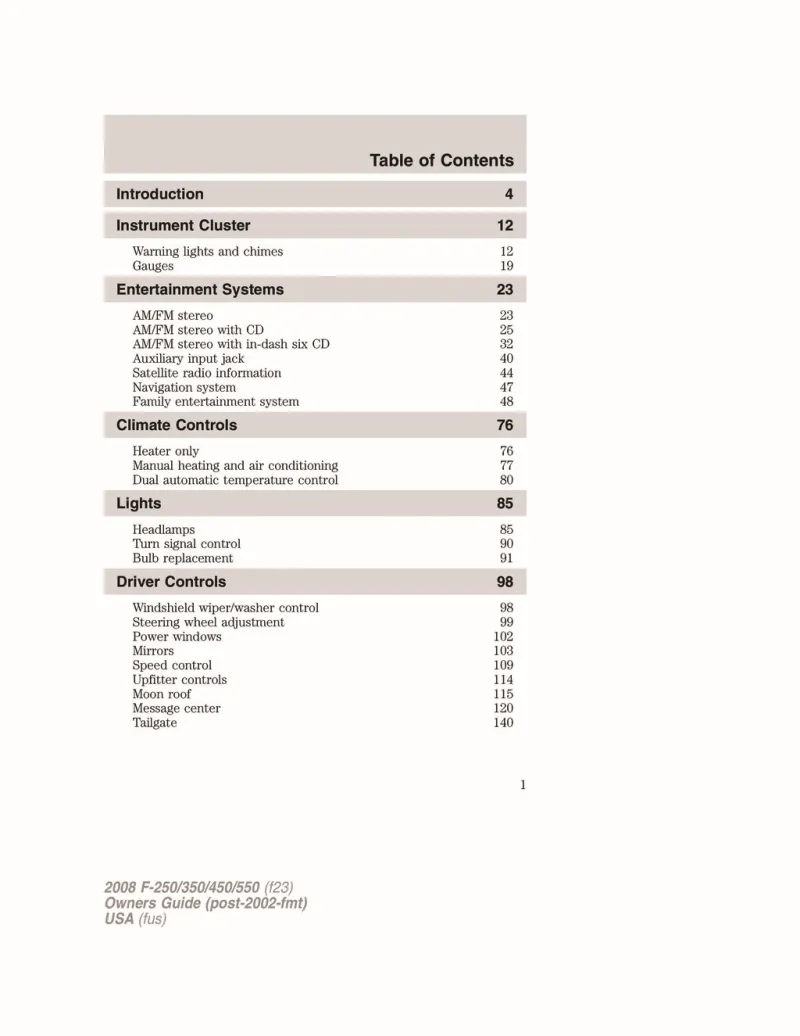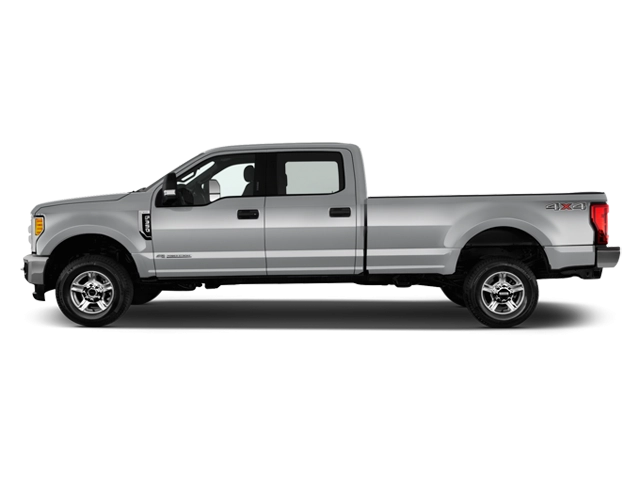2008 Ford F350 Owner's Manual

Table of Contents
2008 Ford F350 Overview
Introduction
The 2008 Ford F350 stands as a testament to Ford’s dominance in the heavy-duty truck market. Renowned for its robust construction, impressive towing capability, and versatile features, the F350 is engineered to excel in both work and play. Whether you're hauling hefty loads or navigating rough terrains, this truck promises reliability and strength, making it a favored choice among truck enthusiasts and professionals alike.
Powertrains
The 2008 F350 offers three powerful engine options to cater to diverse needs. The base model features a capable 5.4-liter V8 engine, delivering 300 horsepower and 365 lb-ft of torque. For those seeking greater power, an optional 6.8-liter V10 engine provides 362 horsepower, making it ideal for heavy hauling. The crown jewel of the lineup is the 6.4-liter turbodiesel V8, producing a formidable 350 horsepower and an astounding 650 lb-ft of torque, further cementing the F350’s reputation as a heavy-duty workhorse.
Trims
The 2008 Ford F350 is available in an array of trims that cater to varying preferences and requirements: the XL, XLT, Lariat, and King Ranch. Each trim level builds upon the previous, offering upgraded features such as improved interior amenities, advanced technology options, and distinct aesthetic upgrades, ensuring there’s a perfect fit for every driver.
Features
The F350 comes packed with features designed for comfort and utility. Standard amenities include air conditioning, an AM/FM radio with CD player, and power windows and locks. Higher trims offer luxuries such as leather upholstery, premium sound systems, navigation, and advanced towing features, ensuring that practicality does not compromise comfort.
Owners Manual
The 2008 Ford F350 owners manual serves as a comprehensive guide to maximizing the vehicle’s capabilities and features. It includes essential maintenance tips, operational guidelines, and troubleshooting advice, empowering owners to achieve optimal performance and longevity from their truck.
User manual download
The Ford F350 owner manual for the 2008 model year is to be found in PDF downloadable format on this page. The owner manual for the model year 2008 is free and in English, but the repair manuals are usually not easy to get and may cost more.
Manual Questions
Fill the form below and someone will help you!

